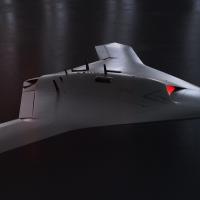Joy Milne’s husband was, understandably, a bit annoyed.
He came home from work one day and, according to Joy, began to emanate a “musky, greasy smell.” She would say he must not have showered, which was frustrating, since he certainly had. He didn’t notice anything, but the odor never went away. The source remained a mystery for decades, and Milne “had to let it go.”
It wasn’t unusual for Milne to smell something her husband could not; she’s a super-sniffer, with a hypersensitive sense of smell capable of detecting scents well beyond the average person.
Thirty years after the mystery began, Milne’s sense of smell picked it up again — at a Parkinson’s disease support meeting she went to with her husband.
It was then that it dawned on her: She had been smelling Parkinson’s disease.
“I realized that other people with Parkinson’s smelled exactly the same as him.”
Joy Milne
She realized that through her nursing career, she had been using her superpowered sense of smell — a condition known as hyperosmia — to help her patients. Milne decided to put her gift to work, traveling as far as Africa and America to discover and discern the scents of diseases: the brineiness of tuberculosis, cancer’s loamy signature.
She became a living diagnostic test.
“Imagine being able to do that without having to go to Joy,” Andreas Mershin, a physicist at MIT, says. “And imagine being able to do that for many different conditions.” Mershin wants to give you that ability, putting a robotic version of a super nose on your smartphone.
A hyper-tuned sense of smell could change how we find, and treat, disease — if we can automate the shockingly complex task of taking a whiff.
Smells Like New Science
A sense of smell researcher told the New York Times’ Brooke Jarvis that most general medical textbooks didn’t have chapters on smell, or the closely related sense of taste, until “quite recently.”
Smell has been derided as base or not important to human function from Plato to Descartes to Darwin, Jarvis pointed out.
With detractors like that, why would any self-respecting scientist poke around amongst the boogers?
While vision and hearing have been explored for centuries, our understanding of the sense of smell is much more recent. It was only 2004 when researchers Linda Buck and Richard Axel shared the Nobel Prize for the discovery of special cells in the nose known as olfactory receptors and characterizing how it is these olfactory cells allow us to smell. We’ve only known this most basic feature of smelling for just a few decades.
Suddenly, Jarvis noted, what science had considered a simple sense revealed itself to be anything but.
The different kinds of vision receptors, popularly known as rods and cones, can be counted on one hand. Meanwhile, there’s a shade less than 400 different types of olfactory receptors in your nose, with about 6 million of them working together to tell you your Poptart has burnt.
And that’s pathetic compared to the 300 million olfactory cells powering a dog’s sense of smell. Or the shark, which dedicates up to two thirds of its brain to scent. The mouse, rocking roughly 1,200 types of olfactory receptors, would put even Milne to shame.
So how does smell work, and what can this under-explored sense tell us?
Understanding our Sense of Smell
Here’s the gist: When we take a whiff, the air brings in various chemical molecules from the things around us. When those chemicals make it into the nose, Buck and Axel’s olfactory cells interact with them and shoot that information up to the brain, which gives us our perception of those chemicals — their scent.
But there’s millions of different odors out there, all with various chemical compositions. And those different chemicals come in different concentrations, shapes, and sizes.
“The olfactory system has to recognize a vast number of molecules with only a few hundred odor receptors or even less,” Vanessa Ruta, a neuroscientist at the Rockefeller University, says. “It’s clear that it had to evolve a different kind of logic than other sensory systems.”
Ruta and her team set out to better understand how the olfactory receptors recognize those molecules, using an insect called the jumping bristletail, which looks like something straight out of Starship Troopers.
Despite knowing about them for a few decades now, researchers have not been able to take a really good look at olfactory cells because the typical imaging methods don’t work well for them.
To get around this issue, Ruta used a technique called cryo-electron microscopy. By shooting electrons at a frozen sample, you can create a 3D model of it, down to the atomic scale. Because it only has five different receptors, they chose to study smell with the jumping bristletail.
What they found, announced in August 2021, was that your sense of smell uses receptors that are uniquely flexible. Rather than locking tight to a specific chemical, the olfactory receptors were able to fit multiple chemicals into their receptors, and the brain translates them into scents by looking at the patterns of receptors activated.
It’s understanding just how our brains make sense of the scents — how can you pick out coffee in a crowded cafe? when does a sock trip the line from fine to ew? — that is the smell researcher’s great challenge.
“We still understand so little about how our noses detect odors,” Harvard neurobiologist Sandeep Robert Datta told the Times.
It’s an understanding we’ll need to grok if we want to truly harness the sense of smell to sniff out disease, like Joy Milne, before it strikes.
The Robot Nose
Mershin, the MIT physicist, believes we may be able to harness smell for our health, using something already in your pocket.
Smartphones have camera “eyes,” microphone ears, speaker mouths — they even have gyroscopes to mimic our sense of balance and spatial awareness.
But what can’t they do?
Smell.
Mershin is on a mission to change that.
“The problem isn’t so much olfaction,” detecting specific chemicals, Mershin says. “The problem is making sense of it.”
In February 2021, MIT announced the creation of the “Nano-Nose.” As Freethink previously covered, the Nano-Nose was able to detect prostate cancer with accuracy comparable to a dog’s.
The current Nano-Nose looks like a slightly chunky smartphone attachment, and is both biological and electronic.
“It’s a bit of a cyborg situation,” the physicist says.
The Nano-Nose contains living cells grown from the ones in our noses responsible for our sense of smell. When exposed to a scent, these receptors go up or down through an electrical current, drawing a picture of the scent. This is then analyzed by an AI, telling us what the Nano-Nose is detecting — technology inspired by what we know, and don’t know, about the nose.
“To have this superpower in your pocket is possible. The technology is available. It’s all about integration.”
Mershin
We’d love to hear from you! If you have a comment about this article or if you have a tip for a future Freethink story, please email us at [email protected].


